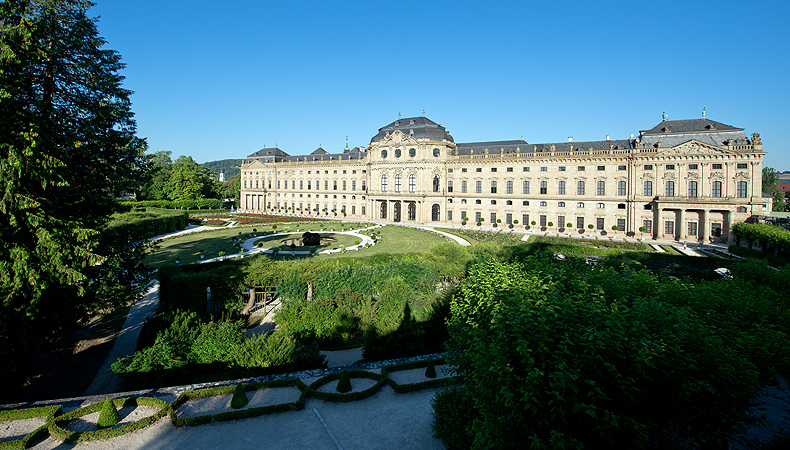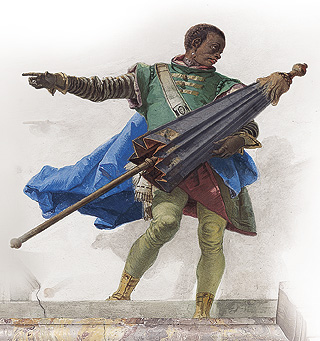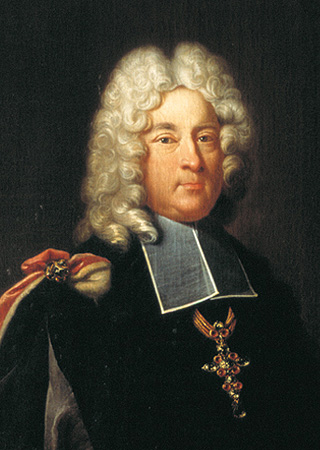Main information:
Würzburg Residence

Unlike the Munich Residence, which evolved over some five hundred years and thus incorporates the styles of quite different periods, the Würzburg Residence was built in its entirety, with short interruptions, almost within a single generation.

Page with parasol,
Imperial Hall
Photo: Achim Bunz
The architects drew their inspiration from an area extending from Vienna to Paris and from Genoa and Venice to Amsterdam. The building embodies the attainments of Western architecture of its day, French château architecture, Viennese baroque and the religious and secular architecture of northern Italy and is a synthesis of the arts of astonishing universality.
The Würzburg court architect, Balthasar Neumann, who was entrused with the coordination of the massive building project, had to work not only with the leading architects of Germany and France – with Lucas von Hildebrandt and Maximilian von Welsch, with Robert de Cotte and Germain Boffrand – but also with numerous artists such as the Italian Antonio Bossi, the "ornamentation genius" of the Würzburg Residence, the gifted sculptors and woodcarvers Johann Wolfgang van der Auwera from Würzburg and Georg Adam Guthmann from Munich, and not least with Giovanni Battista Tiepolo, the greatest fresco painter of the 18th century.

Prince-Bishop Johann Philipp
Franz
von Schönborn,
around 1720
Photo: Bayerische Schlösserverwaltung/
Ulrich Pfeuffer
Balthasar Neumann's incomparable suite of rooms – vestibule, staircase, White Hall and Imperial Hall – one of the most magnificent in the history of palace architecture, was decorated and furnished by these artists and craftsmen in a joint creative undertaking which also produced "Würzburg rococo", the most exuberant of all the variations of this style in Germany.
The Würzburg Residence is moreover by no means the work of the artists alone, but equally that of its various great owners, who, in addition to providing the financial and political means, gave this gigantic building international standing through their widespread connections, which extended far beyond their own lands. These owners were the Counts of Schönborn.
Almost all the ecclesiastical princes from this dynasty had a passion for building, and influenced the planning not only through the level of splendour they demanded, but also through application of their own creative ideas and their astonishing professional knowledge. The Würzburg Residence, on which the patronage of the extraordinary family was concentrated, is the magnificent result of this Schönborn passion.


Facebook Instagram YouTube